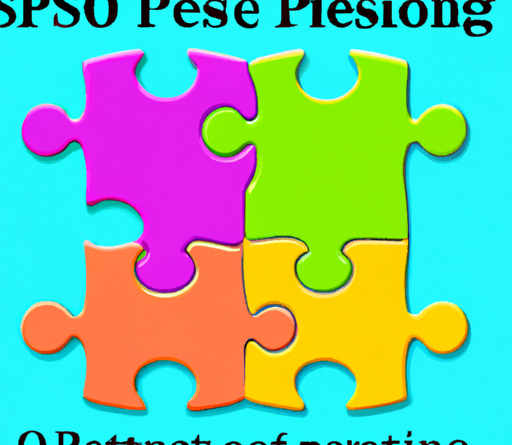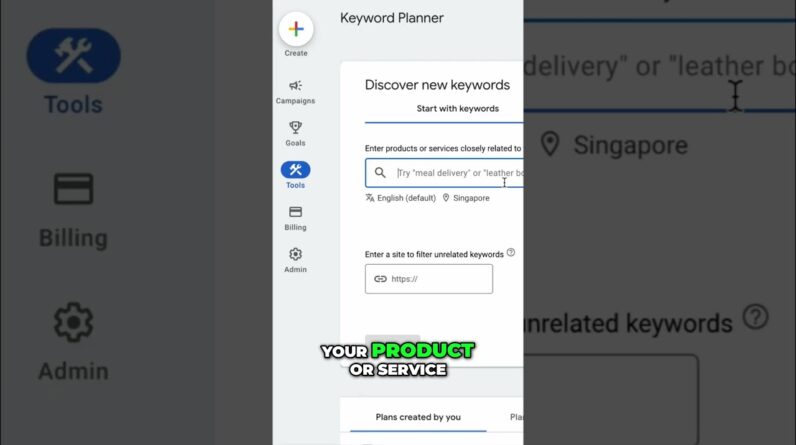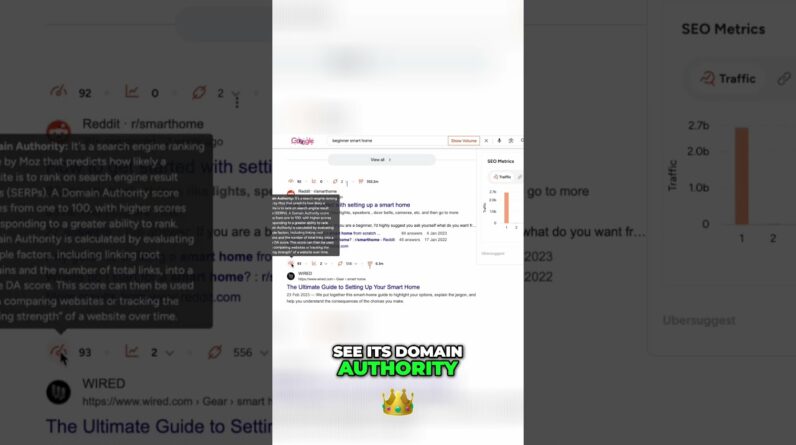
You’re eager to boost your website’s visibility and increase your online presence through search engine optimization (SEO). But where do you start? Understanding SEO best practices is crucial to achieving your goals. In this article, we’ll explore the fundamental principles of SEO and provide practical tips to help you optimize your website and improve your ranking on search engine result pages. From keyword research to on-page optimization and backlinking strategies, we’ve got you covered. So let’s dig in and unlock the secrets to effective SEO!
On-Page Optimization
Title Tags
Title tags are crucial elements of on-page optimization as they provide a concise summary of the content on a web page. When crafting title tags, it is important to include relevant keywords and make them enticing for users to click on. A well-optimized title tag can significantly improve search engine rankings and encourage higher click-through rates. Remember, each page on your website should have a unique and descriptive title tag that accurately reflects the content.
Meta Descriptions
Meta descriptions are short snippets of text that appear below the title tag on search engine results pages. While meta descriptions do not directly impact rankings, they play a vital role in attracting users to click on your website. To optimize your meta descriptions, ensure they accurately summarize the content of the page while incorporating relevant keywords. It is recommended to keep meta descriptions around 150-160 characters to ensure they are not truncated in search results.
URL Structure
URL structure is an important on-page optimization factor as it not only helps search engines understand the content of a page but also enhances user experience. When structuring URLs, it is advisable to include relevant keywords and make them concise and descriptive. Using hyphens to separate words in the URL is preferred over underscores. Additionally, creating a logical hierarchy in the URL structure can make it easier for users to navigate your website.
Header Tags
Header tags (H1, H2, H3, etc.) are used to structure the content of a web page and provide hierarchical information to search engines. The H1 tag should contain the main headline or title of the page and other header tags can be used to denote subheadings and sections. Proper use of heading tags not only helps search engines understand the organization of your content but also improves readability for users. Including relevant keywords in heading tags can also have a positive impact on SEO.
Keyword Placement
Keywords are a fundamental aspect of SEO, guiding search engines to understand what your content is about. Proper keyword placement throughout your content is essential for effective optimization. It is advisable to include primary keywords in the title tag, headers, meta descriptions, and URL. Additionally, incorporating keywords naturally and strategically in the body of your content can further optimize your pages for search engines. However, it is important to avoid keyword stuffing, as it can be penalized by search engines.
Image Optimization
Optimizing images is often overlooked but plays a significant role in on-page optimization. When adding images to your website, ensure they are relevant to the content and appropriately compressed to minimize the page load time. Use descriptive file names and alt tags that include relevant keywords to help search engines understand the context of the image. Additionally, specifying image dimensions can improve page load speed and enhance user experience.
Keyword Research
Keyword Planning
Keyword planning is a crucial step in SEO as it helps identify the terms and phrases users are using to search for information related to your business. It involves conducting thorough research to determine which keywords are relevant, have high search volume, and reasonable competition levels. Use keyword research tools to generate a list of potential keywords and select those that align with your goals and target audience. Analyze the search intent behind each keyword to optimize your content effectively.
Competitor Analysis
Understanding what your competitors are doing can provide valuable insights for your keyword research. Analyze their websites and identify the keywords they are targeting. Look for gaps or opportunities where you can outperform them. By studying your competitors’ strategies, you can gain a better understanding of the market and adjust your own keyword planning accordingly. Remember, it is not about copying your competitors’ keywords, but rather leveraging their strategies to gain a competitive edge.
Long-tail Keywords
Long-tail keywords are specific, highly targeted phrases that often have lower search volumes but higher conversion rates. While they may not generate as much traffic as broader keywords, they can attract more qualified leads. Long-tail keywords typically consist of more than three words and are more specific in nature. By incorporating long-tail keywords into your content, you can improve your chances of ranking higher in search results and reaching users who have a clear intent.
LSI Keywords
LSI (Latent Semantic Indexing) keywords are terms related to your primary keyword and help search engines understand the context and relevance of your content. Including LSI keywords in your content can enhance its overall optimization. To find LSI keywords, conduct a search related to your primary keyword and scroll down to the “Searches related to…” section at the bottom of the search results page. These suggested keywords can provide insights into the terms commonly associated with your topic.
Content Optimization
High-Quality Content
Creating high-quality content should be at the forefront of your SEO efforts. Focus on producing valuable, informative, and engaging content that resonates with your target audience. High-quality content not only attracts visitors but also encourages them to stay on your site, reducing bounce rates. Moreover, search engines tend to prioritize high-quality content in their rankings. Make sure your content is well-researched, well-written, and provides a solution or answer to users’ queries.
Keyword Density
Keyword density refers to the percentage of times a keyword appears in your content compared to the total number of words. While there is no specific recommended keyword density, it is crucial to use keywords naturally and avoid overstuffing them. Aim for a balance between incorporating keywords and maintaining readability. Remember, search engines prioritize user experience, so focus on producing valuable content that satisfies users’ needs rather than obsessing over keyword density.
Mobile-Friendly Content
With the increasing use of mobile devices, optimizing your content for mobile is essential. Ensure your website and content are responsive and mobile-friendly. Test your site on various devices to ensure it functions and displays properly. Avoid using large file sizes that can slow down page load time on mobile devices. By prioritizing mobile-friendly content, you can improve user experience, increase engagement, and boost your search engine rankings.
Structured Data Markup
Structured data markup is a way to provide additional information about your content to search engines. By implementing structured data, you can enhance the visibility and presentation of your site in search results. Structured data can include review ratings, business hours, event details, and more. Utilizing structured data markup can make your content more appealing in search results and potentially increase click-through rates.
Internal Linking
Internal linking refers to linking relevant pages of your website together. When done correctly, internal linking can improve user navigation, distribute link equity, and provide context to search engines. Link to related articles or pages within your content using anchor text that includes relevant keywords. By strategically interlinking your content, you can guide users to other valuable resources on your website and help search engines understand the structure and relevance of your content.
Optimized Anchor Text
Anchor text is the clickable text used as a hyperlink. Optimizing anchor text is important for both user experience and SEO. When linking to other pages on your website or external sources, use anchor text that is descriptive and relevant to the page being linked. Incorporate keywords in your anchor text, but avoid over-optimization and ensure it reads naturally. Optimized anchor text can improve the context and relevance of your content in the eyes of search engines.
Technical SEO
XML Sitemap
An XML sitemap is a file that lists all the pages of your website and provides crucial information to search engines about the organization and structure of your content. Including an XML sitemap on your website can help search engines crawl and index your pages more efficiently. It also allows you to specify the priority and frequency of updates for each page. Ensure your XML sitemap is up to date, error-free, and submitted to search engines via tools like Google Search Console.
Robots.txt
A robots.txt file is a text file that guides search engine crawlers on which pages of your website to crawl and index. It is used to control the behavior of search engine bots and prevent certain pages from being indexed. Properly configuring your robots.txt file is crucial to ensure search engines prioritize crawling and indexing the most important pages on your site. Be cautious when updating your robots.txt file to avoid accidentally blocking important pages.
Website Speed
Page load speed is a critical factor in both user experience and SEO. Slow-loading pages can lead to higher bounce rates and lower search engine rankings. Optimize your website’s speed by compressing images, minifying CSS and JavaScript files, and leveraging browser caching. Regularly monitor your website’s speed using tools like Google PageSpeed Insights or GTmetrix. By ensuring your website loads quickly across all devices, you can improve user satisfaction and boost search engine rankings.
Crawl Errors
Crawl errors occur when search engine bots encounter issues while crawling and indexing your website. It is important to identify and fix crawl errors promptly to avoid negatively impacting your search engine rankings. Use tools like Google Search Console to identify crawl errors such as broken links, server errors, or pages blocked by robots.txt. Address these errors by fixing broken links, resolving server issues, or updating your robots.txt file accordingly.
Mobile Responsiveness
In today’s mobile-driven world, having a responsive website is crucial for SEO success. Google prioritizes mobile-friendly websites in its search results. Ensure your website’s design and layout adapt seamlessly to different screen sizes and resolutions. Test your site on various mobile devices to ensure it functions properly and offers a smooth user experience. By providing mobile-responsive content, you can improve your chances of ranking higher in mobile search results.
Canonicalization
Canonicalization refers to the process of selecting the preferred version of a URL when multiple versions of the same page exist. This is important to prevent duplicate content issues and consolidate the ranking potential of your web pages. Implement canonical tags in your HTML code to indicate the canonical version of each page. This helps search engines understand which version of the URL should be indexed and displayed in search results. Canonicalization ensures that your website’s SEO efforts are not diluted by duplicate content.
Site Architecture
URL Structure
A well-structured URL hierarchy is vital for both user experience and SEO. Use descriptive URL slugs that accurately reflect the content of each page. Organize your URLs in a logical manner, with clear categories and subcategories. Avoid using long and convoluted URLs that are difficult for users and search engines to understand. Clean and concise URLs not only improve your site’s navigability but also enhance its visibility in search results.
Site Navigation
Easy and intuitive site navigation is essential for users to explore your website effortlessly. A well-designed navigation menu should be prominently placed and offer clear and logical categories. Ensure each page can be reached within a few clicks from the main navigation menu. Implement breadcrumbs to provide users with a clear path back to previous pages. By optimizing your site navigation, you can enhance user experience and encourage visitors to explore more of your content.
Breadcrumb Navigation
Breadcrumb navigation is a secondary navigation system that displays the user’s location within a website’s hierarchy. It usually appears near the top of a webpage and shows the user’s path back to the homepage. Breadcrumb navigation enhances the overall user experience by providing context and making it easier for users to navigate deeper into your site. From an SEO standpoint, breadcrumb navigation also helps search engines understand the structure and organization of your website.
Internal Linking
Internal linking is a crucial aspect of site architecture and helps search engines understand the relationship between different pages on your website. Link relevant pages together using highly descriptive anchor text. This not only enhances user navigation but also distributes link equity throughout your site. By strategically interlinking your content, you can guide search engines to important pages, improve overall visibility, and positively impact search engine rankings.
Siloing
Siloing is a website architecture technique that involves organizing your content into themed sections or silos. Each silo focuses on a specific topic or keyword, with top-level category pages linking to related sub-category and content pages. Siloing helps search engines easily understand the relevancy and hierarchy of your content. This can result in higher search engine rankings and improved visibility for your targeted keywords. Siloing also enhances user experience by providing clear and organized navigation.
User Experience
Page Load Time
Page load time is a critical factor in user experience and can significantly impact your website’s success. Slow-loading pages can frustrate users and lead to higher bounce rates. Optimize your website’s speed by reducing image sizes, minimizing code, and leveraging browser caching. Regularly test your site’s load time and make necessary adjustments to ensure fast and seamless performance. By prioritizing page load time, you can provide a positive user experience and improve your search engine rankings.
Mobile Friendliness
Mobile friendliness is no longer a novelty, but a necessity. With a growing number of users accessing the internet on mobile devices, it is crucial to optimize your website for mobile. Implement responsive design techniques to ensure your website adapts to different screen sizes and resolutions. Test your site on various mobile devices to ensure functionality and usability. By offering a mobile-friendly experience, you can attract and retain more mobile users, leading to higher engagement and better search rankings.
Responsive Design
A responsive design is a design approach that ensures your website’s layout and content adapt seamlessly to different screen sizes and resolutions. This includes desktops, tablets, and mobile devices. A responsive design eliminates the need for separate mobile versions of your site, making it easier to maintain and optimize. By providing a consistent and user-friendly experience across all devices, you can improve user engagement and enhance your chances of ranking higher in search results.
Clear Navigation
Clear and intuitive navigation is essential for a positive user experience. Ensure your navigation menu is easy to find, prominently placed, and offers logical categories. Use descriptive menu labels that provide clear guidance to users. Avoid cluttered or confusing navigation menus that can overwhelm visitors. By optimizing your navigation for clarity and simplicity, you can help users find the information they’re looking for quickly and easily, leading to increased engagement and improved search engine rankings.
Readable Font Sizes
Font size is an important aspect of user experience as it directly affects readability. Ensure your website uses a font size that is comfortable for users to read across different devices and screen sizes. Avoid using small font sizes that strain the eyes or large font sizes that make reading difficult. Aim for a font size between 16 and 18 pixels for body text, ensuring proper line spacing and contrast with the background. By prioritizing readability, you can provide a better user experience and encourage users to engage with your content.
Accessible Content
Accessibility is an essential consideration for a user-centered website. Ensure your content is accessible to users with disabilities by following WCAG (Web Content Accessibility Guidelines) standards. Provide alternative text for images, captions for videos, and transcripts for audio content. Use heading tags properly to structure your content for screen readers. Optimize color contrast for users with visual impairments. By making your content accessible, you can reach a wider audience and improve the overall user experience of your website.
Link Building
Natural Link Building
Natural link building refers to the process of earning links to your website organically. This is achieved by creating high-quality content that is valuable and shareable. When users find your content helpful, they are more likely to link to it from their own websites and social media platforms. Natural link building involves actively promoting your content, engaging with your target audience, and building relationships with influencers in your industry. By focusing on creating exceptional content, you can attract natural links that enhance your search engine rankings.
External Linking
External linking refers to linking out to reputable and relevant websites from your own content. When you cite authoritative sources, it adds credibility and value to your content. Additionally, linking to high-quality external resources can benefit your SEO efforts by signaling to search engines that your content is well-researched and informative. Be selective in your choice of external links and ensure they are relevant and trustworthy. By incorporating external links, you can enhance the overall user experience and increase your content’s visibility in search results.
Guest Blogging
Guest blogging is an effective link building strategy that involves writing and publishing content on external websites. By contributing guest posts to reputable blogs and publications in your industry, you can expand your reach, build your brand authority, and earn valuable backlinks. When guest blogging, focus on providing valuable and unique content that resonates with the target audience of the host website. This not only increases the likelihood of your post being accepted but also enhances your chances of attracting relevant traffic and generating quality backlinks.
Broken Link Building
Broken link building is a tactic that involves finding broken links on external websites and reaching out to the site owners to suggest replacing the broken link with a relevant link to your own content. This strategy requires conducting thorough research to identify broken links, creating high-quality content that can replace the broken link, and contacting the website owner to propose the replacement. By fixing broken links and offering valuable content, you can build strong relationships, earn quality backlinks, and improve your search engine rankings.
Social Media Promotion
Social media platforms can be valuable tools for link building and content promotion. By sharing your content on social media, you can reach a wider audience and encourage users to visit your website and share your content with their own networks. Actively engage with your audience, respond to comments and messages, and encourage discussion and sharing. Social media promotion not only increases your content’s visibility but also enhances your chances of earning backlinks from influential users and websites.
Local SEO
Google My Business
Google My Business (GMB) is a free tool that allows businesses to manage their online presence on Google. Creating and optimizing your GMB listing is crucial for local SEO success. Provide accurate and up-to-date information about your business, including contact details, opening hours, and customer reviews. Regularly monitor and respond to customer reviews to build trust and credibility. By optimizing your GMB listing, you can increase your chances of appearing in local search results and attracting more customers to your physical location.
Local Citations
Local citations refer to mentions of your business name, address, and phone number (NAP) on other websites and directories. These citations play a crucial role in local SEO as they help search engines verify your business information and establish its relevance to a specific geographical location. Consistency is key when it comes to local citations, so ensure your NAP details are accurate and consistent across all platforms. Seek out reputable local directories and industry-specific websites to create citations and improve your local search visibility.
Online Reviews
Online reviews have a significant impact on consumers’ purchasing decisions and also play a crucial role in local SEO. Encourage customers to leave reviews on platforms such as Google, Yelp, and TripAdvisor. Respond to reviews, both positive and negative, to demonstrate your commitment to customer satisfaction. Regularly monitor and address any negative reviews to rectify customer concerns. Positive reviews can boost your local search rankings and attract more customers to your business.
NAP Consistency
Consistency in your business’s name, address, and phone number (NAP) is vital for local SEO. Ensure your NAP details are accurate and consistent across all online platforms, including your website, social media profiles, local directories, and review sites. Inconsistencies can confuse search engines and potentially harm your local search rankings. Regularly review and update your NAP information to ensure accuracy and consistency, especially when you move or change contact details.
Localized Content
Creating localized content is essential for targeting specific geographical areas and connecting with local audiences. Develop content that is relevant to your target location, such as blog posts, articles, and landing pages. Incorporate local keywords and references to demonstrate your expertise and relevance to the local community. Engage with local events, charities, and organizations to further establish your local presence. By focusing on localized content, you can increase your visibility in local search results and attract customers in your target area.
Mobile SEO
Responsive Design
Responsive design is crucial for mobile SEO, as it ensures your website adapts seamlessly to different screen sizes and resolutions. Implement responsive design techniques that optimize your website’s layout, content, and functionality for mobile devices. Test your site on multiple mobile devices and use tools like Google’s Mobile-Friendly Test to ensure compatibility. By providing a responsive experience, you can improve mobile user engagement and increase your chances of ranking higher in mobile search results.
Accelerated Mobile Pages (AMP)
Accelerated Mobile Pages (AMP) is an open-source initiative that allows websites to create mobile-friendly versions of their pages that load almost instantly. By implementing AMP, you can significantly enhance your website’s performance on mobile devices and improve user experience. AMP pages are lightweight, stripped-down versions of your content that prioritize speed and simplicity. While AMP is not a ranking factor, it can positively impact your mobile SEO efforts by reducing bounce rates and improving page load times on mobile devices.
Mobile-Friendly Testing
Regularly testing your website for mobile-friendliness is crucial for mobile SEO success. Use tools like Google’s Mobile-Friendly Test or WebPageTest to assess the mobile responsiveness of your site. These tools provide insights into potential issues and offer suggestions for improvement. Address any mobile-friendly issues promptly to optimize your website for mobile search. By prioritizing mobile-friendliness, you can enhance user experience, increase mobile traffic, and boost your search engine rankings.
Mobile Site Speed
Mobile site speed is a critical factor in mobile SEO and user experience. Slow-loading mobile pages can frustrate users and lead to higher bounce rates. Optimize your website’s mobile performance by minimizing file sizes, leveraging browser caching, and reducing server response times. Regularly monitor your mobile site speed using tools like Google PageSpeed Insights or GTmetrix. Make necessary adjustments to improve performance and ensure your website loads quickly on mobile devices. By prioritizing mobile site speed, you can provide a seamless browsing experience and increase your chances of ranking higher in mobile search results.
Analytics and Reporting
Google Analytics
Google Analytics is a powerful tool that provides valuable insights into website traffic and user behavior. It allows you to track key metrics such as the number of visitors, their demographics, and their interaction with your website. By analyzing this data, you can gain insights into user preferences, identify opportunities for improvement, and measure the success of your SEO efforts. Set up Google Analytics on your website and regularly review the reports to optimize your strategies and achieve your SEO goals.
Google Search Console
Google Search Console is a free tool provided by Google that allows website owners to monitor their website’s presence in search results and identify potential issues. It provides valuable data on how your site is performing in search, including search queries, crawl errors, and indexed pages. Use Google Search Console to submit your XML sitemap, monitor crawl errors, and review search analytics data. Regularly check for any issues or penalties flagged by Google and make necessary adjustments to improve your website’s visibility and performance.
Keyword Ranking Reports
Keyword ranking reports provide valuable data on the position of your website in search engine result pages for specific keywords. These reports allow you to track the progress of your SEO efforts and identify areas for improvement. Monitor your keyword rankings regularly to identify trends, assess the impact of your optimization strategies, and adjust your approach accordingly. Use keyword ranking reports to set realistic goals, measure your progress, and refine your keyword targeting for better organic visibility.
Website Traffic Analysis
Analyzing website traffic data is essential to evaluate the effectiveness of your SEO strategies. Monitor key metrics such as the number of visitors, page views, average session duration, and bounce rates. Identify patterns and trends in your traffic data to gain insights into user behavior, preferences, and engagement with your content. Use this information to optimize your website, content, and user experience. Regularly review your website traffic data to track progress, identify areas for improvement, and make data-driven decisions.
Conversion Tracking
Conversion tracking allows you to measure and analyze the actions users take on your website that contribute to your business goals. This can include form submissions, newsletter sign-ups, product purchases, or any other desired user action. By setting up conversion tracking, you can gain insights into the effectiveness of your SEO efforts in driving valuable actions. Use this data to identify successful strategies, optimize your website for conversions, and drive business growth. Regularly review your conversion tracking data to measure your SEO ROI and refine your marketing strategies.






